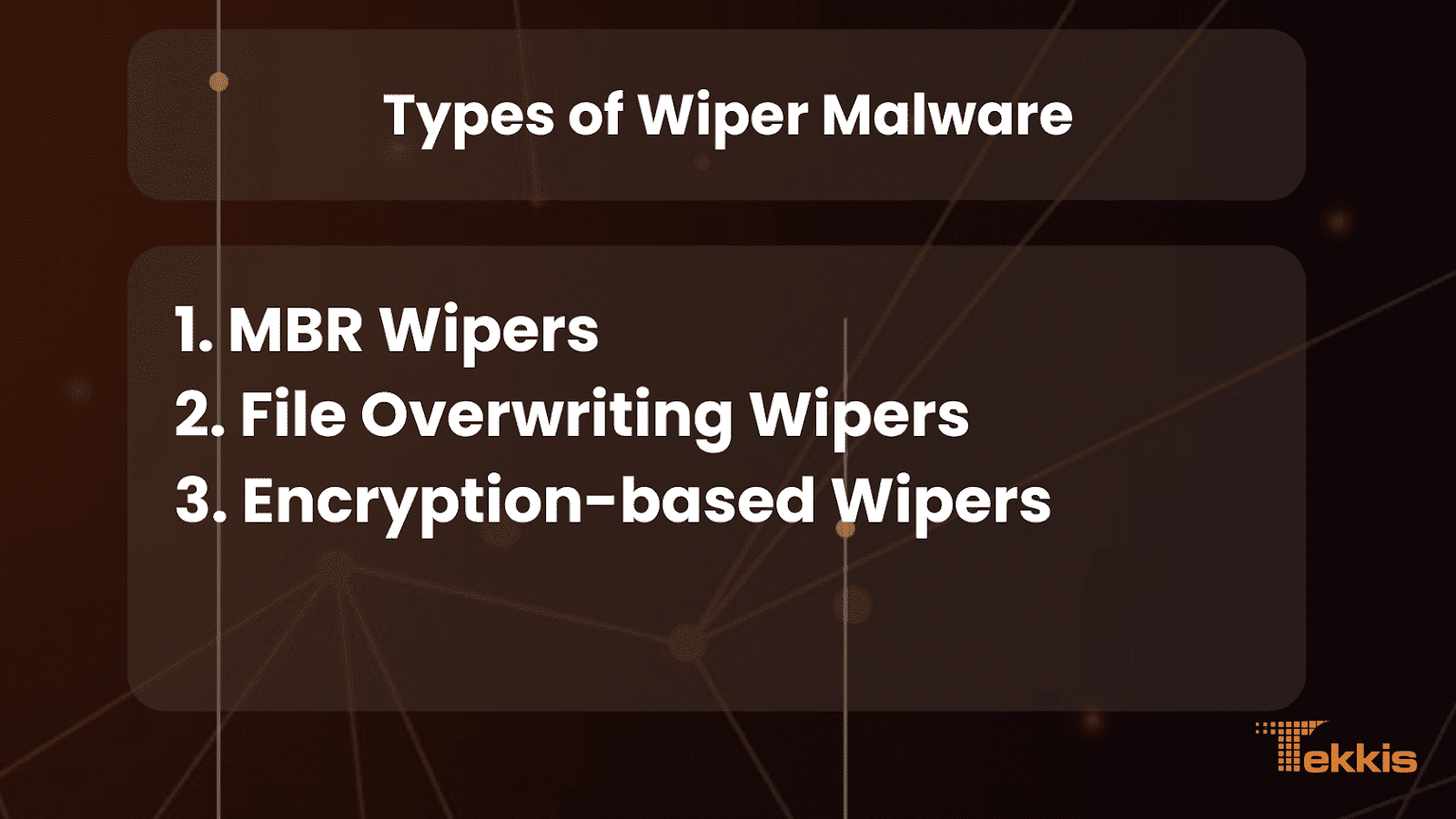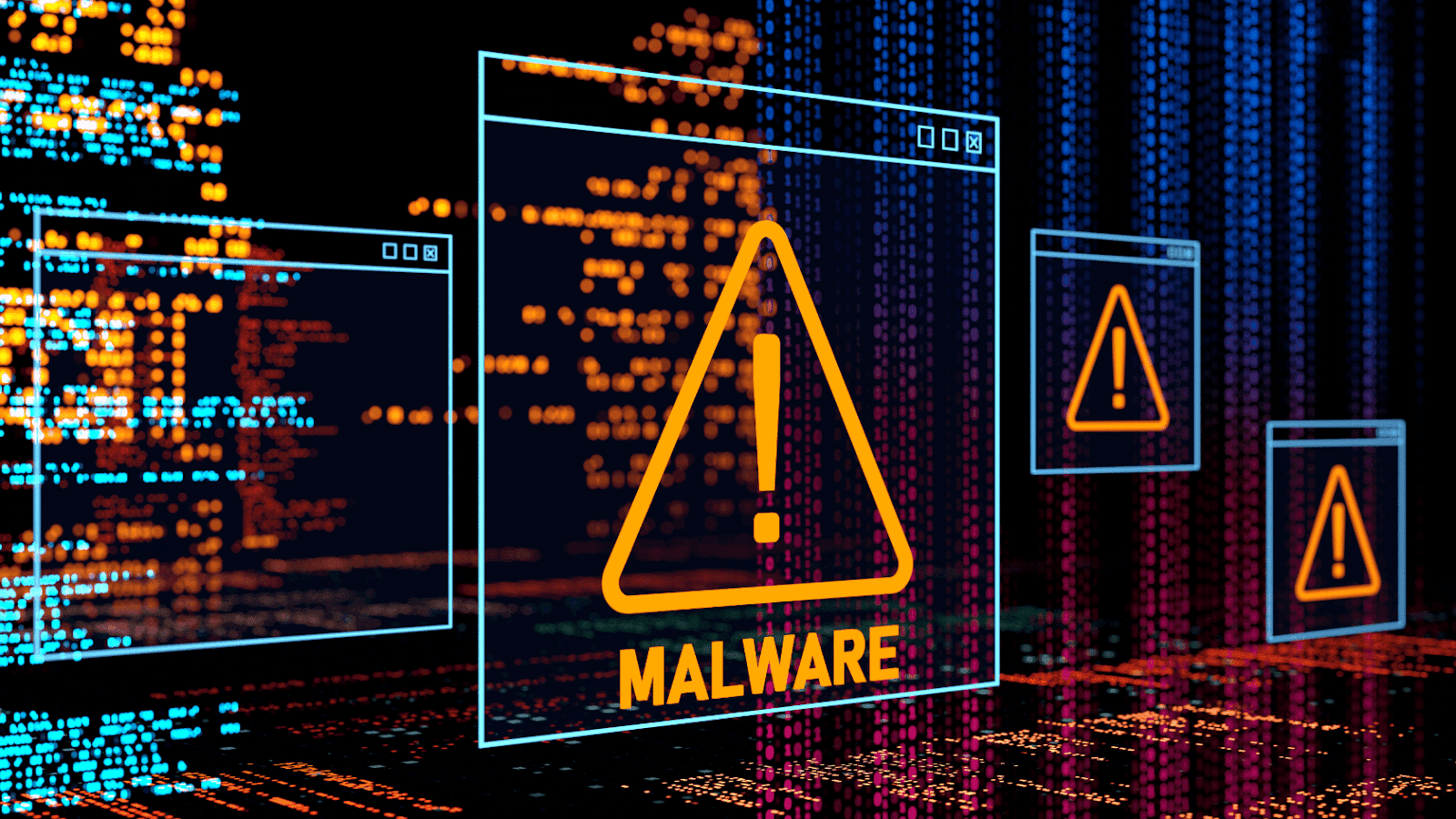For the past couple of years, ransomware attacks originating in Russia have been hitting the globe, threatening business owners. In recent developments, a new malware called Hermetic Wiper Malware has been discovered in Ukraine as the war between Ukraine and Russia develops. This new malware is claimed to have been designed to destabilize the cyber infrastructure in Ukraine. In this article, you will learn all about this malware and find out whether or not you should be concerned about it.
To safeguard your business against emerging cyber threats, consider partnering with Tekkis Cyber Security. Our team of experts is dedicated to providing robust security solutions tailored to your needs.
Also Read:

Types of Wiper Malware
Wiper malware is a malicious software category designed to erase or disrupt access to data on targeted systems. It comes in various forms, each with distinctive methods of execution and damage potential. Here are the primary types of wiper malware:
1. MBR Wipers
MBR wipers specifically target the Master Boot Record (MBR) of a computer's hard drive. The MBR is critical as it contains information about how the operating system is loaded. By corrupting or overwriting this section, these wipers render the system unbootable. Victims often face complete inaccessibility to their operating systems and data, often requiring complex recovery processes or even full system reinstalls to regain functionality.
2. File Overwriting Wipers
File overwriting wipers operate by systematically targeting and deleting files on infected systems. Such malware may search for specific file types or designated directories, rewriting existing data with random characters or zeros. This thorough approach ensures that the original files are irrecoverable. Victims may lose important data, documents, images, and system files, significantly disrupting personal and professional activities.
3. Encryption-based Wipers
Unlike traditional ransomware that seeks to extort victims by encrypting files with the promise of decryption upon payment, encryption-based wipers take a more malicious approach. They encrypt files without any intention of providing a means to recover them. This effectively destroys access to the data, leaving victims with virtually no options to retrieve their important information. The absence of a decryption key means that once the malware has completed its task, the files are lost forever, leading to potentially catastrophic consequences for individuals and organizations alike.
Each type of wiper malware poses unique risks and consequences, emphasizing the need for robust cybersecurity measures and regular data backups to mitigate potential losses.
What is Hermetic Wiper Malware?
Wiper malware is malware that aims to erase, remove, or overwrite the data present on a hard disk of a computer system. This malware isn't new and has existed for a while. Reports suggest that one form of the Wiper malware is called 'HermeticWiper or KillDisk.NCV has been targeting organizations in Ukraine for the last three months.
Unlike ransomware, wiper attacks eliminate the possibility of regaining lost data through financial payment. This makes them particularly dangerous, as the damage is often permanent and irreversible.
This Wiper malware works by exploiting drivers of the EaseUS Partition Master application, designed to create and manage partitions in Windows.
Notable Wiper Malware Attacks in History
Several high-profile wiper malware attacks have occurred in recent years:
- The 2012 Shamoon attack on Saudi Aramco
- The 2013 DarkSeoul attack on South Korean banks and broadcasters
- The 2017 NotPetya attack that spread globally
- The 2022 HermeticWiper attacks on Ukrainian organizations

How Does Hermetic Wiper Malware Work?
Hermetic Malware works like a trojan wiper malware infection. Through the EaseUS Partition Master, Hermetic Wiper is able to corrupt the data of the target computer. Once the data is corrupted, this malware restarts that machine.
Every hard disk has a Master Boot Record (MBR) that identifies information about the location of the operating system. This information is important for the computer to start (boot up). The Hermetic Malware corrupts the first 512 bytes of this Master Boot Record. This can render the entire hard disk useless.
HermeticWiper targets the Master Boot Record (MBR) and partition tables, corrupting these elements to wipe the data storage structure of the infected system. Additionally, HermeticWiper can overwrite specific files on the system, hindering forensic analysis and data recovery efforts.
Wiper Malware vs Ransomware: Key Differences
While both wiper malware and ransomware are destructive, they differ in key ways:
- Wiper malware aims for permanent destruction, while ransomware seeks financial gain
- Ransomware typically allows data recovery after payment, wiper malware does not
- Wiper attacks are often politically motivated, whereas ransomware is usually financially driven
Hermetic Wiper Malware's Targets
For now, the report of Hermetic Malware infections is coming from Ukraine, so organizations situated in Ukraine are the major target. This malware attack is coupled with the massive wave of DDoS attacks faced by the country's government organizations. These DDoS attacks stopped the functioning of the online portal of government offices in Ukraine, as well as major banking websites in the country.
The use of wiper malware has significantly increased since the start of Russia's invasion of Ukraine, with multiple types of wipers being used against Ukrainian entities. Nation-state threat actors, such as Russian cyber groups, have used at least seven types of wiper malware to cripple critical Ukrainian organizations.

Techniques Employed by Wiper Malware
1. File Discovery and Deletion
Wiper malware begins its attack by systematically scanning the infected system for critical files, which often include documents, databases, and system files. Once identified, the malware executes commands to delete these files, rendering them unrecoverable and crippling the user’s access to important data. This technique is particularly harmful as it exploits the user's reliance on their stored information, leading to potential data loss and operational disruption.
2. Drive Destruction
Certain wiper variants go a step further by targeting entire storage drives. This malicious software aims to corrupt or overwrite the file system of the drives, effectively making them unusable. Users often find that their drives become inaccessible, forcing them to replace hardware or seek professional data recovery services, which can be costly and may not guarantee success.
3. Overwriting the Master Boot Record (MBR)
One of the more destructive capabilities of wiper malware is its ability to overwrite the Master Boot Record (MBR). The MBR is integral to the boot process of a computer, as it contains information about the disk's partitions and the bootloader required to start the operating system. By corrupting the MBR, the malware prevents the system from booting properly, leaving users unable to access their operating system and data.
4. Overwriting the Master File Table (MFT)
On NTFS file systems, wiper malware can target the Master File Table (MFT), which keeps track of all files and directories on the drive. By overwriting the MFT, the malware complicates or even entirely hinders the file recovery process. Users may find that even with recovery tools, retrieving their data becomes virtually impossible due to the obliterated references to their files. This ensures that the damage inflicted by the wiper is extensive and lasting.
These techniques underline the severity of wiper malware, as its goal is not just to disrupt but to cause irreversible damage to data integrity and system functionality.
How to Be Safe From Hermetic Wiper Malware?
Hermetic Wiper isn't targeting anyone outside of Ukraine right now. However, there is no surety that the situation will remain the same. Since the attacks have already surfaced, there is a good probability that the businesses in the US might be next. Even if there is no cause for worry from Hermetic Wiper malware, there are many other wiper malware attacks to be cautious about.
There was a 53% increase in the use of disk wipers by threat actors between the third and fourth quarters of 2022. This alarming trend highlights the growing threat of wiper malware to organizations worldwide.
The best way to prevent these attacks is to set up your security with the latest intrusion-prevention system provided by Tekkis. Schedule a consultation with us to get a glimpse of our industry-leading security solutions and protect your business round the clock with our assistance.

Impact of Wiper Malware on Business Continuity
Wiper attacks can cause instant and permanent harm, fully crippling the operations within an organization and causing costly downtime events. The impact can be devastating:
- Complete loss of critical data
- Extended operational downtime
- Damage to reputation and customer trust
- Significant financial losses from recovery efforts
Advanced Protection Strategies Against Wiper Malware
Regular Backups and Data Recovery Plans
To safeguard against wiper malware, it is crucial to implement robust backup solutions that ensure data integrity and availability. Regularly updated backups should be performed, ideally stored in multiple locations, including off-site or cloud-based solutions. Additionally, it's essential to test recovery procedures frequently to confirm that data restoration can be completed efficiently and reliably when needed. Establishing a comprehensive recovery plan not only ensures that data can be restored but also minimizes downtime in the event of an attack.
Network Segmentation
A key strategy in combating the spread of wiper malware is network segmentation. By dividing the network into smaller, isolated segments, organizations can limit the lateral movement of malware, protecting critical systems from widespread infection. Each segment should have its own security controls and policies, thereby containing potential threats and making it more challenging for attackers to access sensitive information. Regular assessments of network architecture and segmentation effectiveness are vital to adapt to evolving threats.
Endpoint Detection and Response (EDR) Solutions
Deploying advanced Endpoint Detection and Response (EDR) solutions is essential for maintaining a proactive security posture. These tools provide real-time monitoring and analysis of endpoint activity, allowing for the rapid detection of abnormal behavior that may indicate a malware threat. EDR capabilities include automated responses to threats, forensic analysis for incident investigation, and detailed visibility across all endpoints. By integrating EDR systems within a broader security strategy, organizations can significantly enhance their ability to detect, respond to, and recover from wiper malware incidents effectively.

Conclusion
In conclusion, the emergence of Hermetic Wiper Malware underscores the critical importance of cybersecurity for any industry. As the threat of malicious software increases, it’s essential for individuals and organizations to implement robust security measures and maintain regular data backups to safeguard against potential attacks.
At Tekkis Cyber Security, we are dedicated to providing cutting-edge solutions to protect your systems and data from evolving cyber threats. Don’t wait until it’s too late—take proactive steps to enhance your cybersecurity posture today. Contact us for a consultation, and let us help you secure your digital environment!



